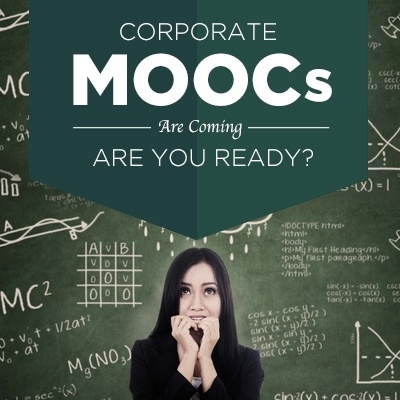Everything You Wanted To Know About MOOCs And Corporate Training
MOOCs have been the talk of the Learning and Development industry for quite some time. But, what exactly are they?
MOOCs Defined
Massive Open Online Courses, or MOOCs, are online courses that allow participants free access and unrestricted participation in any course of their choice. Besides the conventional modes of teaching such as lectures, videos, and reading material, MOOCs also provide a platform for interactive forums. It is also one of the custom eLearning methodologies that encourage self-paced learning which remains focused on the skills that the learners wish to hone. MOOCs are further divided into two categories—cMOOCs and xMOOCs.
- cMOOCs
cMOOCs are MOOCs that allow for the dynamic development of study material. That is, instead of having a pre-planned set of reading materials and courseware, the material will be developed through online discussions and collaborations among learners taking the course across the globe. - xMOOCs
xMOOCs, on the other hand, believe in the conventional approach where the courses are well-structured with pre-selected reading and reference materials.
A Brief History
MOOCs were first started in 2008, created by George Siemens and Stephen Downs, and was called "Connectivism and Connective Knowledge/2008" or CCK08. It was created as a credit course for the University of Manitoba. CCK08 had 25 students who had paid fees for the course and around 2,200 learners who took the course for free.
MOOCs really took off in 2012, when Professors Sebastian Thrun and Peter Norvig of Stanford University offered the online course called "Introduction to Artificial Intelligence." This course had approximately 1,600,000 students participating from 190 countries. After the success of "Intro to Artificial Intelligence", Thrun and Nrovig started Udacity, a business model for online knowledge sharing. There are also a few other MOOCs providers, including Coursera and EdX.
The Advantages Of MOOCs
- Courses are offered for free.
- Access to courses offered by professors at top schools.
- Courses are available to a vast and diverse audience across the globe.
- Learners’ performance can be monitored easily using the data captured during the start of courses.
- Both professors and learners get worldwide exposure, thus improving pedagogical techniques and knowledge sharing.
- Can be used as a tool in a blended learning program, where students can access more information than what is provided in the class.
The Disadvantages Of MOOCs
- Can’t provide personalized courseware and attention from a tutor.
- It is difficult to keep track of students’ assignments and involvement.
- Learners with disabilities and a poor internet connection can’t use MOOCs.
- Language can be a barrier when offering MOOCs.
- MOOCs can’t be used as a credit-earning course at universities.
MOOCs Vs. LMSs For Corporate Learning
However, despite the widespread popularity of MOOCs in training and development, one question remains: Are they suitable for implementation in a corporate training setting? Many organizations use a Learning Management System (LMS) to handle their employees’ ongoing training and development. An LMS is where courses are stored and accessed, while a MOOC is a specific course. MOOCs often utilize LMS platforms to deliver their course content and manage the learning experience.
The connection between MOOCs and LMSs is instrumental in delivering engaging online courses at scale, managing learner interactions, and tracking progress. The LMS platform acts as the backbone, supporting the delivery, management, and evaluation of MOOCs, while MOOCs provide the content and learning experience within the LMS environment.
Here Are A Few Ways Organizations Can Use MOOCs For Employee Training
- Upskilling
Utilizing MOOCs enables businesses to enhance their employees’ skills in emerging technologies or business procedures, allowing them to maintain a competitive edge and enhance their overall financial performance. - Reskilling
MOOCs can reskill employees facing job displacement due to technological change. This can help businesses to retain their valuable employees and avoid costly hiring and training costs. - Professional development
MOOCs offer employees the chance to enhance their professional development, enabling them to progress in their careers while maintaining their motivation at work.
If you are considering using MOOCs for corporate training, there are a few things to remember. Initially, you should select MOOCs that align with your business requirements. Subsequently, it is crucial to guarantee that your employees have adequate time and resources to finish the chosen MOOCs successfully. Lastly, monitoring your employees’ progress and ensuring they acquire the essential skills is important.
Conclusion
The Research and Markets report forecasts that the worldwide MOOC market will experience a compound annual growth rate (CAGR) of 34.54% in the anticipated period. This growth is expected to produce a market value of approximately US$7,209.889 million by 2027. MOOCs have transformed learning by offering free access to various courses and promoting self-paced learning. They provide advantages such as global accessibility, exposure to top-quality courses, and easy monitoring of learners’ performance. As MOOCs, social learning, and microlearning become increasingly popular, corporate training must keep up with the education sector and adopt these new trends. With careful planning and execution, MOOCs can be a valuable tool for corporate training.








